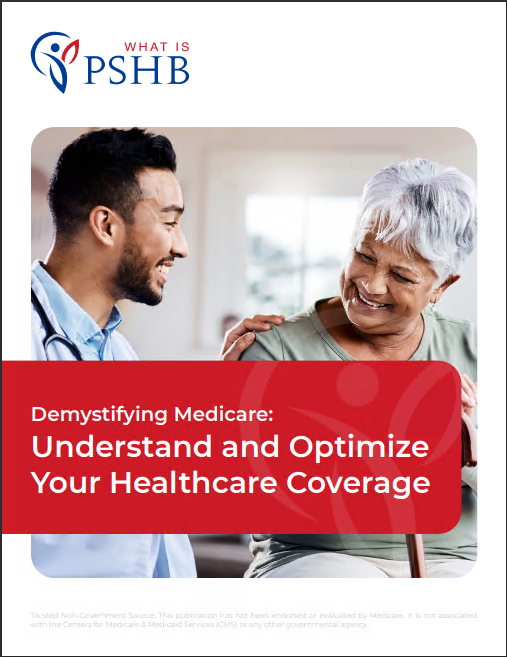Key Takeaways:
- If you’re planning to retire from USPS in the near future, understanding Medicare Part B under PSHB is crucial for ensuring your healthcare coverage stays affordable.
- The Postal Service Health Benefits (PSHB) program will replace FEHB for postal workers starting in January 2025, making this Open Season a critical time to review your options and plan for your Medicare enrollment.
What’s Changing for Postal Retirees with PSHB?
As we edge closer to January 1, 2025, the launch date of the new Postal Service Health Benefits (PSHB) program, it’s time to take a closer look at what this overhaul means for future retirees, particularly when it comes to Medicare Part B. If you’re like most postal workers, healthcare is one of the key components of your retirement plan. But with PSHB on the horizon, you might be asking yourself: what do I need to know about Medicare, and more specifically, Medicare Part B?
Under the new PSHB program, enrolling in Medicare Part B is not just a good idea—it may become a requirement for many future postal retirees. Let’s walk through what that means for your retirement planning and why now is the time to pay attention, especially during this year’s Open Season, which runs from November 11, 2024, to December 9, 2024.
Why the Focus on Medicare Part B?
Medicare Part B covers outpatient care, doctor visits, preventive services, and some types of durable medical equipment. Most federal retirees already have access to the Federal Employees Health Benefits (FEHB) program, but with the upcoming shift to PSHB, postal retirees will be automatically enrolled into new plans unless they take action during Open Season.
The big change? If you want to keep your PSHB coverage and enjoy the full range of benefits it offers, enrolling in Medicare Part B when you turn 65 becomes a critical step. This wasn’t always the case under FEHB, where retirees could choose to skip Medicare Part B and rely solely on their federal health plan. But now, with PSHB, future retirees will need to enroll in Part B to maintain comprehensive coverage.
That’s why it’s important to understand what Medicare Part B brings to the table—and how it fits into your overall healthcare strategy after retirement.
PSHB and Medicare: A Partnership You Can’t Ignore
One of the main reasons PSHB emphasizes Medicare Part B enrollment is to help reduce overall costs, both for retirees and the government. By coordinating benefits between Medicare and PSHB, retirees can expect lower out-of-pocket expenses, fewer gaps in coverage, and better long-term healthcare management.
Here’s how it works: once you’re enrolled in Medicare Part B, it becomes the primary payer for your outpatient services. That means PSHB will act as your secondary coverage, picking up the remainder of your costs after Medicare pays its share. In many cases, this leads to smaller copays, lower deductibles, and reduced overall healthcare expenses.
Without Medicare Part B, you could face higher costs for these services, as PSHB won’t cover what Medicare would normally pay for. It’s a win-win situation for those who enroll—making Medicare Part B an essential part of your retirement plan under PSHB.
The Importance of Open Season: November 11, 2024 – December 9, 2024
Open Season is the time to make crucial decisions about your healthcare plan, and this year is more important than ever for postal employees and retirees. If you’re still working for USPS, you’ll be automatically enrolled in a PSHB plan come January 1, 2025, unless you decide to make changes during Open Season. However, it’s up to you to ensure that you’re prepared for the transition, especially when it comes to Medicare Part B.
During Open Season, you’ll have the opportunity to:
- Review the new PSHB plan options.
- Compare the costs and benefits.
- Decide whether you need to make any changes to your current health plan.
- Plan your Medicare Part B enrollment to coordinate with your new PSHB coverage.
Even if you’re still a few years away from retirement, this Open Season is the perfect time to start thinking about your future healthcare needs. It’s better to plan ahead and avoid any surprises down the line, especially as PSHB comes into effect.
Avoiding Penalties: Why You Should Enroll in Medicare Part B
If you’re approaching age 65 or planning to retire soon, delaying your Medicare Part B enrollment can lead to financial penalties that last for the rest of your life. For every year that you delay Part B enrollment beyond your initial eligibility period (which begins three months before you turn 65 and ends three months after your 65th birthday), you’ll face a 10% penalty on your premiums—forever.
For postal retirees who want to maintain their PSHB coverage and keep healthcare costs manageable, this is a huge incentive to enroll in Medicare Part B when the time comes. By doing so, you’ll avoid lifetime penalties and ensure that your PSHB plan works smoothly alongside Medicare, providing the comprehensive coverage you’ll need in retirement.
Planning for the Costs of Medicare Part B
While Medicare Part B isn’t free, the potential savings on your overall healthcare costs make it well worth the investment. In 2024, the standard monthly premium for Medicare Part B is $174.70, but your actual premium might be higher if your income exceeds certain thresholds.
When you factor in the out-of-pocket savings that come from Medicare’s coordination with PSHB, many retirees find that the cost of Medicare Part B pays for itself. Between lower copays, reduced hospital stays, and comprehensive outpatient coverage, the money you spend on Part B premiums could end up saving you much more in overall healthcare costs.
And remember, this Open Season is your opportunity to plan ahead. If you’re not yet eligible for Medicare, start thinking about how Part B will fit into your healthcare strategy when you do reach 65. By taking advantage of this year’s Open Season, you can review your options and prepare for the costs associated with Medicare Part B under PSHB.
How PSHB Affects Current Retirees and Future Retirees Differently
It’s worth noting that while future retirees will need to enroll in Medicare Part B to keep their PSHB coverage, current retirees who are already in the FEHB system may have different rules. Some may not be required to sign up for Medicare Part B, depending on their situation. However, for those of us who are still working or planning to retire soon, the new PSHB rules mean that Medicare Part B enrollment is essential.
If you’re retiring after January 1, 2025, you’ll need to plan on enrolling in Medicare Part B as soon as you’re eligible to avoid any disruptions to your healthcare coverage. If you’re already retired but still under the age of 65, keep this timeline in mind for when you do reach Medicare eligibility.
The Bottom Line on Medicare Part B and PSHB
Healthcare is a major concern for any retiree, and with the new PSHB program set to launch in 2025, planning for Medicare Part B is no longer an optional step. It’s a necessary part of your retirement planning if you want to keep your costs down and ensure comprehensive healthcare coverage.
As Open Season approaches, take the time to review your healthcare options, understand how Medicare Part B fits into your PSHB plan, and make the necessary arrangements to avoid penalties and maximize your benefits. This is your chance to lock in the coverage that will support you throughout your retirement years.
PSHB and Medicare Part B: The Key to Affordable Healthcare in Retirement
The good news is that with Medicare Part B and PSHB working together, future postal retirees can enjoy more affordable, well-rounded healthcare coverage. But it all hinges on careful planning and making the right choices during Open Season. Don’t wait until it’s too late—start planning now for your healthcare future under PSHB and make sure you’re ready for the January 1, 2025 transition.






